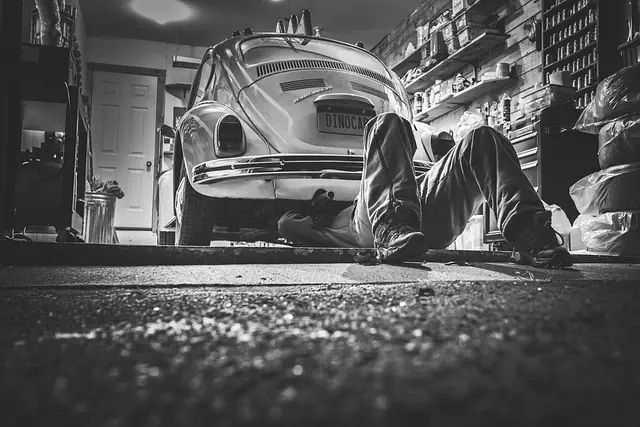Installing new car speakers in a Toledo vehicle requires understanding your existing system, choosing the right speakers based on size, power, and type for optimal sound, and proper preparation for DIY or professional installation. Before starting, gather tools, acquire compatible speakers and wiring kits, park safely, and refer to your vehicle manual or consult professionals. Decide between DIY or professional installation based on skills and budget. Follow a structured approach for speaker placement, mounting, wiring, and testing for top-notch audio performance in your Toledo car after installation.
Are you ready to transform your daily commute into an immersive audio experience? This comprehensive guide delves into the world of car speaker installation, from understanding your vehicle’s existing system to selecting the perfect speakers and optimizing your new audio setup. We explore both DIY and professional options, offering insights on pros, cons, and a step-by-step process for a successful install. Whether you’re in Toledo or beyond, unlock the potential of your car’s sound system today!
- Understanding Your Car Speaker System: Components and Layout
- Choosing the Right Speakers for Your Vehicle: Size, Type, and Power
- Preparing Your Car for Installation: Tools, Materials, and Safety Measures
- DIY vs Professional Car Speaker Installation: Pros and Cons
- Step-by-Step Guide to a Successful Speaker Installation
- Testing and Optimizing Your New Car Audio System
Understanding Your Car Speaker System: Components and Layout
Before diving into a car speaker installation in Toledo, whether it’s a DIY project or a professional service, understanding your car’s existing speaker system is key. This involves familiarizing yourself with its components and layout. Your vehicle likely boasts several speakers strategically placed throughout the cabin, designed to deliver optimal sound quality for both front and rear passengers. These speakers are connected through a complex wiring harness, often controlled by an amplifier or receiver.
The layout of your car’s speaker system can vary greatly depending on the make and model. Common components include door speakers, trunk or subwoofer, and a head unit that houses the amplifier and controls audio playback. A professional installation service will ensure proper placement and connectivity, maximizing sound performance. For DIY enthusiasts, understanding this setup is crucial for making informed decisions about speaker selection and installation to achieve a seamless upgrade in your Toledo car.
Choosing the Right Speakers for Your Vehicle: Size, Type, and Power
When it comes to choosing speakers for your vehicle, the first step is understanding your needs and preferences. The size of the speakers plays a significant role in terms of both physical fit within your car’s interior and sound projection. Standard sizes range from 4-inch to 6.5-inch, with larger ones offering deeper bass response.
Types of speakers vary as well, including component systems (seamless upgrade for audiophiles), coaxial speakers (a space-saving option), and subwoofers (for enhanced low-end performance). Power rating, measured in watts, indicates the speaker’s ability to produce sound; higher ratings allow for louder volumes and better performance. Whether you opt for a DIY car speaker installation in Toledo or seek professional assistance, matching your chosen speakers with the appropriate power and size ensures an optimal audio experience tailored to your vehicle.
Preparing Your Car for Installation: Tools, Materials, and Safety Measures
Before you begin the installation process, ensuring your car is ready involves gathering the necessary tools and materials, creating a safe workspace, and understanding basic safety measures. For a DIY car speaker installation in Toledo or anywhere else, you’ll need typical tools like screwdrivers (both flathead and Phillips), wire strippers, pliers, and a measuring tape. It’s essential to have high-quality speakers compatible with your vehicle’s make and model, along with wiring kits designed for easy integration.
Safety should always be a priority when working on your car. Park your vehicle on a level surface and engage the parking brake. Remove any loose items from the cabin to prevent them from becoming projectiles during installation. Additionally, wear safety gear such as gloves and safety glasses to protect yourself from sharp objects and debris. Make sure electrical components are handled with care, and always refer to your car’s manual or consult a professional for specific instructions tailored to your vehicle.
DIY vs Professional Car Speaker Installation: Pros and Cons
When it comes to installing car speakers, there are two primary options: DIY or professional. While some enthusiasts enjoy the satisfaction of a do-it-yourself (DIY) project, such as a car speaker installation Toledo, others prefer to leave it to the experts.
Professional car speaker installation offers several advantages, including precision and expertise in fitting speakers seamlessly into your vehicle’s interior. They have access to specialized tools and knowledge about your car’s make and model, ensuring optimal sound quality. However, this option comes at a cost, with pricing varying based on the complexity of the job and equipment used. In contrast, DIY installation can be more budget-friendly, allowing you to save money by purchasing and installing speakers yourself. It’s an excellent choice for those who enjoy hands-on projects and are comfortable working with car electronics. Yet, it requires research, time, and a certain level of technical skill to achieve professional-looking results without compromising sound performance.
Step-by-Step Guide to a Successful Speaker Installation
Step-by-Step Guide to a Successful Speaker Installation
For those looking to enhance their automotive audio experience, whether it’s for a car speaker installation in Toledo or a DIY project, a well-planned approach is key. Start by ensuring your vehicle is properly prepared; this includes cleaning the mounting areas and checking for any damage or compatibility issues with your chosen speakers. Gather all necessary tools and components, including the speakers, amplifiers, wiring harnesses, and mounting hardware. Professional car speaker installation often begins with removing the factory audio system to create a clean canvas for the new setup.
Next, carefully plan the speaker placement, considering sound projection and coverage. Mounting options vary; you might choose to install speakers in door panels, trunk, or custom locations. Use appropriate brackets and ensure secure mounting. Connect the wiring harnesses, ensuring proper signal routing and grounding. A professional touch involves using high-quality cables and connectors to maintain signal integrity. Finally, test the system, adjusting volume levels and equalization for optimal sound performance. Whether you opt for a DIY car speaker installation or seek professional assistance, this structured approach will contribute to a successful and satisfying audio enhancement experience.
Testing and Optimizing Your New Car Audio System
After successfully installing your new Tweeter speakers, it’s crucial to test and optimize your car audio system for the best possible sound experience. Start by ensuring all connections are secure and tight. Then, use a high-quality testing tool or your stereo’s built-in diagnostic functions to verify that each speaker is receiving power and playing back sound clearly.
Adjust the bass, treble, and midrange settings on your stereo until you achieve a balanced sound that suits your preferences. Pay close attention to the clarity of speech and the quality of high, middle, and low frequencies. A professional car speaker installation in Toledo often involves fine-tuning these settings for optimal performance, ensuring every note is heard with precision and clarity.


